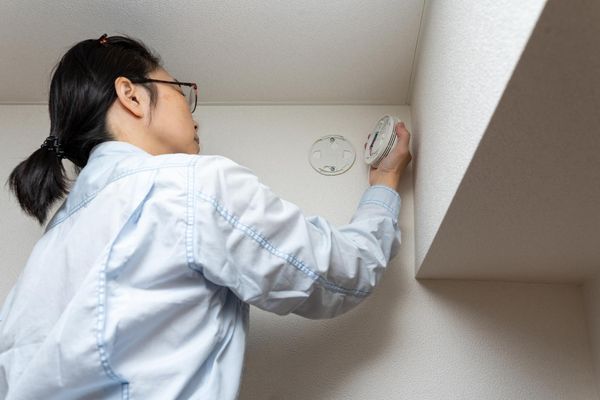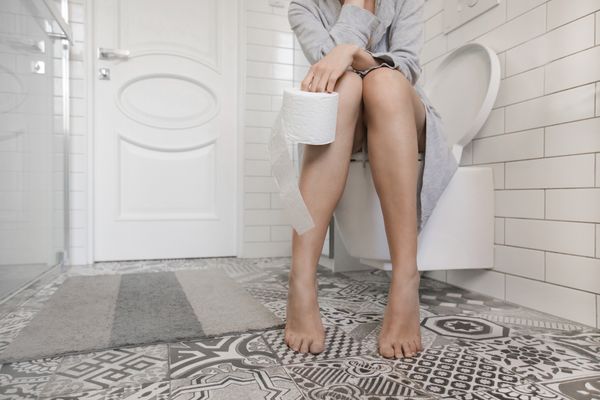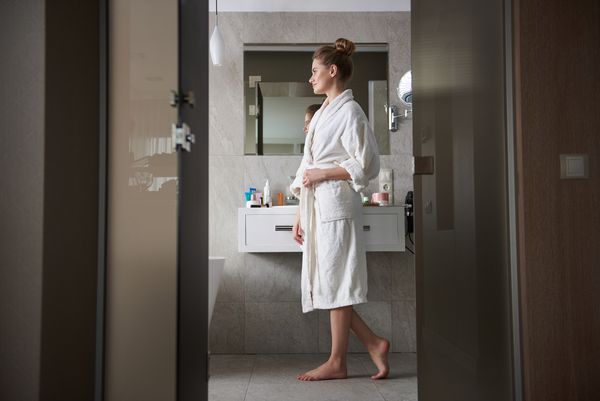For many of us, housecleaning is simply a necessary evil—a chore we delay as long as possible and then rush through quickly. (That's why the dirty socks get stuffed under the sofa cushions!)
It may be time to rethink that philosophy. Cleaning your living space has real benefits beyond making the place presentable. How you clean and what you choose to use when you clean can help you reduce some medical problems and even build your fitness.
Breathe easier
Heidi Waterfield was suffering. The San Francisco woman had severe, cold-like symptoms and frequent sinus infections that were interfering with her work and family life. When testing showed that she was highly allergic to dust, the treatment plan included changing the Waterfield household's approach to cleaning.
With much regret, three bookshelves filled with dust-attracting volumes were banished to the garage, along with toys and other items. Heidi and her husband pared down clutter in the bedrooms as well and started using a HEPA (high-efficiency particulate air-filtered) vacuum cleaner. Use of HEPA equipment has been shown to substantially remove allergens and contaminants from carpets and surfaces. Those cleaning changes, along with generic allergy medications, "have significantly improved my health," says Heidi.
Environmental scientist Carol Westinghouse explains why a properly sealed and filtered HEPA vacuum can make such a difference. "With a regular vacuum cleaner, you're sucking the dust in at one end and spewing it out at the other," she says. That process can irritate everyone's breathing, but is especially bad for those with asthma, allergies and other breathing or skin sensitivities.
Westinghouse, who is program manager of Cleaning for Health, a project of the nonprofit organization Informed Green Solutions, advises schools and institutions on how to change to "greener" cleaning choices. She promotes switching to mops and cloths made from polyester and nylon microfibers that draw dust through a magnetic charge. Microfiber items "do a superior job in capturing dirt and dust" and may be washed and reused for years. Due to their weave, microfiber cloths for window or mirror cleaning need no chemicals and the mops are much better than cotton at capturing bacteria, Westinghouse adds.
Consumers can find HEPA vacuum cleaners and microfiber products in many stores, including discount retailers and online.
Less-toxic cleaning
What you spray, wipe, scrub or slosh on surfaces when you clean affects the health of everyone in your household. And, as the ingredients in those cleaners release fumes into the air or rinse down the drain, they affect environmental health as well.
General household cleaners often contain certain chemicals such as bleach or phthalates that can irritate skin and lungs, interfere with liver function, affect the reproductive system or even cause some cancers.
Research has long shown that cleaning chemicals worsen asthma and trigger attacks in asthmatics, so women with asthma are cautioned about using cleaners containing more toxic chemicals in work settings or at home. Recently, scientists have found that these ingredients also trigger first episodes of asthma in people who did not have the condition before. In studies, users experiencing new-onset asthma triggered by cleaning products included adults cleaning in their own homes and nurses with occupational exposure to cleaners and disinfectants.
Of course, adults aren't the only ones affected. Westinghouse says, according to a recent study, "prenatal exposure to the use of disinfectants, bleach, carpet cleaner, window cleaner, air fresheners, paints, dry cleaning fluid, aerosols and pesticides increased the risk that the young child would have persistent wheezing."
Surprisingly, toxic chemicals might not even be listed on labels for products marketed for home use. "Manufacturers are only required to list (certain) ingredients in institutional and industrial cleaners," Westinghouse explains.
Companies that sell less-toxic cleaning products often fully disclose ingredients on their labels. The Cleaning for Health program advises choosing home-use cleaners that are:
- plant- or bio-based, not petroleum-based
- biodegradable
- pH neutral
- packaged in recyclable, pump-spray bottles, not aerosol cans
For more about cleaning safely at home or work, visit Women's Voices for the Earth.
Cleaning as exercise
While using less-toxic products makes cleaning more healthful, here's another way that doing household chores can improve your life: The physical exertion you use when cleaning helps build your overall fitness. "It's burning calories, getting your heart rate up a little bit and moving your body," says Harvard Medical School associate professor of medicine Harvey B. Simon, MD, author of The No Sweat Exercise Plan: Lose Weight, Get Healthy and Live Longer.
Isabel Maples discovered this benefit of housecleaning by accident. The Virginia woman was wearing her pedometer to count steps one day when she was home from work and doing chores.
"I was just there cleaning. I'd walk up and down the stairs multiple times, sorting laundry upstairs, then bringing it to the main floor...and I'd be straightening up," she says.
At the end of her day's efforts, the pedometer showed she had logged 20,000 steps (most step-counting programs set 10,000 steps a day as a good target). When she went to work, Isabel logged only about 8,000 steps all day. "I was shocked," she says of her discovery that cleaning was a good physical activity.
For tips on using a pedometer, go here
You don't need to dust all day to get activity benefits from cleaning. According to Dr. Simon, the accepted wisdom used to be that exercise was "something that required a discreet set-aside period of time," in which you would get your heart rate up aerobically and keep it up for an extended stretch. "Now we've learned from an enormous body of literature that to be healthy you don't have to do that."
Instead, his research developed a new way of looking at healthful activity—by measuring the cardiometabolic exercise (or CME) value of everyday and recreational activities. This rating shows how well a physical activity can reduce the risk of heart disease, high blood pressure, stroke, colon cancer and breast cancer, as well as protect against weight gain and developing diabetes.
Each activity is given a CME point value. Aim for 1,000 CME points per week, or about 150 a day, to achieve and maintain good health. For weight loss, increase that daily total to 300 and the weekly to about 2,000, Dr. Simon advises.
These housecleaning activities, done at a moderate intensity for 30 minutes each, can contribute to your daily 150 CME points for healthful physical activity:
- dusting, 75 CME points
- household chores, 115 CME points
- ironing or laundering clothes, 70 CME points
- mopping, 115 CME points
- scrubbing the floor, 185 CME points
- sweeping, 90 CME points
- washing dishes, 60 CME points
- vacuuming, 115 CME points
To compare those numbers with walking for 30 minutes, a 140-pound person earns 85 CME points at a 2 mph pace, 110 CME points at 3 mph and 150 CME points at 4 mph.
Since many of us don't vacuum or dust for 30 minutes straight, you can combine 10 minutes of dusting with 10 minutes of brisk walking and 10 minutes of vacuuming to accumulate similar CME point totals (depending upon activity intensity). Adding short bits of other physical activities will help you reach your daily goal.
Realizing that housework is beneficial exercise might not make it more appealing, but it does provide a reward that lasts longer than a clean bathroom.
"You are getting a health benefit from any physical activity, including household chores," says Dr. Simon. "The more you do with your body, the better off you'll be."







